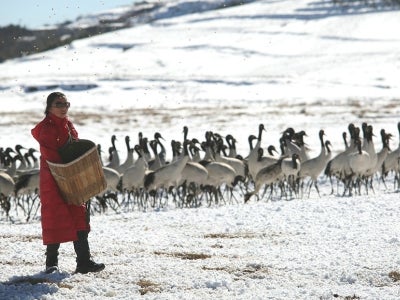
dolphin_B_5.png
Over the last few decades, China has undergone massive urbanization and will have close to one billion people live in urban areas. China’s Pearl River Delta, the world’s largest habitat for Chinese White Dolphins but also one the world’s most densely populated areas and a key hub for economic development, is adjusting to these changes. Currently, a highly ambitions infrastructure scheme is underway to merge nine Pearl River Delta urban areas into a mega city of 42 million inhabitants, geographically 26 times larger than Greater London. At the midst of this urban development project is the Hong Kong–Zhuhai–Macau Bridge, - a 26-mile network of bridges and undersea tunnels that will connect the urban centers in the Delta.
These developments have no doubt taken a heavy toll on the river delta, where vast volumes of sewage and industry wastewater are discharged. Underwater construction activity and boat traffic also cause large acoustic disturbances. As a result, local marine biodiversity has declined at an alarming rate over the last ten years. The population of the Chinese White Dolphin has dwindled to less than 2,000 dolphins, with many of them dying because of stranding, incidental fish catch and boat collisions. However, the true state of the marine ecosystem is largely unknown, as biodiversity monitoring and conservation is not yet commonly employed in China.

dolphin%201.png
In 2010, China’s Zhuhai Biological Society (ZHBS) initiated a project to improve awareness and conservation of the vulnerable Chinese White Dolphin and other marine mammals in the Delta. ZHBS gained the support of the GEF Small Grants Programme to establish a scientific knowledge base that would allow them to conduct biological research and monitor the health of marine life to effectively advocate for the protection of the dolphins. Through a ‘train the trainers’ program, which trained volunteers in wildlife conservation, research and rescue technologies, ZHBS has been able to considerably expand monitoring activities. Overall, more than 300 hundred volunteers – half male, half female - have participated in research and conservation activities, and 20 members formed a rescue network to offer immediate help to injured or stranded whales and dolphins.
Through the volunteer network, a total area of 460 km2, is now being monitored and protected; and 1,800 Chinese White Dolphin photo IDs have been created. The volunteers have also educated more than 600 people and fisher folk about the serious situation of marine mammals in the Pearl River Estuary through interviews, brochures, seminars, exhibitions, and an Awareness Day. Training materials on the conservation of the Chinese White Dolphin have been shared with other communities in Macau and Hong Kong as well. Women, with their particular ability to advocate and build trust with people, have thereby taken the lead in the outreach, training and rescue activities.

Dolphon%202.png
The public awareness campaign was so successful that the Ministry of Agriculture issued a policy on training the construction and management personnel of the Hong Kong-Zhuhai-Macao Bridge. To date, 1,925 people have been trained. Many of them have taken action to reduce the negative impact on the Chinese White Dolphin. For example, the construction company has agreed to adapt the construction schedule during the breeding period of Chinese White Dolphin from April to August every year; to lower construction noise by using environmentally friendly piling equipment; and to limit the rate of construction boats to avoid collisions with the dolphins. In addition, the Bridge Construction Administration has put aside a special fund for conservation trainings, which will continue to be held until the bridge is completed.
Chinese White Dolphins are classified as a “vulnerable species” by the IUCN and listed in CITES. In China itself, this species has been listed as a Grade 1 National Key Protected Animal since 1988. The project has successfully established a good example of multi-stakeholder cooperation by citizens, local government agency, university, and the private sector.
About the GEF Small Grants Programme
Launched in 1992, GEF SGP supports activities of nongovernmental and community-based organizations in developing countries towards climate change abatement, conservation of biodiversity, protection of international waters, reduction of the impact of chemical pollutants and prevention of land degradation while generating sustainable livelihoods.
Since its creation, GEF SGP has provided over 19,000 grants to communities in over 131 developing countries. Funded by the Global Environment Facility (GEF) as a corporate programme, GEF SGP is implemented by the United Nations Development Programme (UNDP) on behalf of the GEF partnership, and is executed by the United Nations Office for Project Services (UNOPS).
Media contacts:
Katharina Davis, Knowledge Management and Communications Consultant, GEF Small Grants Programme, katharina.davis@undp.org, +1 (646) 781-4386 www.sgp.undp.org
Christian Hofer, Senior Communication Officer, GEF, chofer@TheGEF.org, +1 (202) 458-0938 www.TheGEF.org


